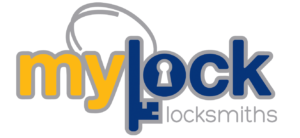When it comes to securing your home, good locks do more than just keep intruders out. They keep your insurance valid too. It’s an easy thing to overlook, but so many people don’t realise that just having the wrong type of lock on your doors or windows can invalidate your home insurance policy. So if the worst happened and you were to be burgled, your insurer could refuse to pay out, and they’d be in the right.
So, let’s break down what insurance companies generally expect from your home security (because they’re all slightly different), the types of locks you should have, and why it all matters more than you might think.
Wooden Doors Need British Standard Mortice Locks
If your front or back door is made of wood, then your insurer will usually require each one to have a 5-lever mortice lock that meets British Standard BS3621. This type of lock is known for its strength and reliability, and it’s been independently tested to make sure that it offers a solid level of protection. The reason for this requirement is simple – wooden doors are less secure, so they need all the reinforcement they can get! You can check if your lock is BS3621 by looking for the British Standard kite mark on the faceplate (that’s the bit visible on the edge of the door). If it’s not there, or your locks only have 2 or 3 levers, then it’s time for an upgrade.
uPVC Doors Need Anti-Slip Cylinders
A lot of homes in the UK, especially new builds, have uPVC or composite doors instead. Wood has fallen out of fashion a bit! These types of doors use a euro-cylinder lock, but that doesn’t mean they’re all the same. Older or cheaper versions can be easily snapped, letting burglars in in seconds.
Insurance providers know all about this, and so if you want valid insurance, you’ll need to install anti-snap, anti-bump cylinders. These don’t cost a lot, especially compared to the cost of a break-in or burglary! You should look for a cylinder that meets TS007 3-star or Sold Secure Diamond Standard – both of these show that the locks have been tested against modern attack methods.
Smart Tech Helps, But Locks Matter Most
You might think that adding in some smart locks and security options like CCTV and smart doorbells would all be big ticks for your insurance company. Which is true, and they can even help lower your insurance premiums with some providers.
But here’s the thing – all the tech in the world doesn’t replace proper locks. Insurers still want to see robust physical security at all entry points. Cameras might capture footage of the break-in, but a solid lock could stop it from happening altogether.
Check Lock Standards When Moving House
When you move into a new home, the very first thing you should be doing (after making a cup of tea) is call a locksmith to change your locks. It’s easy to assume it’s all secure, but you don’t know who still has keys to that property. On top of that, your insurer might even have changing the locks in their policy terms. So if you don’t do it, your insurance isn’t valid from day 1. It’s a good idea to change the locks anyway – just be sure you’re the only one with a set of keys.
What to Look For – Your Checklist
So, what are insurers looking for, and how can you make sure you get it all done? Here’s a simple breakdown of how you can stay compliant with most insurance policies.
Front and Back Doors (Wooden)
- What insurers want: 5-lever mortice lock, certified to BS3621
- What to do: Check for the British Standard kite mark. If it’s not there, upgrade to a compliant lock. Your insurance may specifically ask for “locks meeting BS3621” in the policy wording—don’t ignore that.
uPVC or Composite Doors
- What insurers want: Secure euro-cylinder, ideally anti-snap/TS007 3-star
- What to do: Inspect the cylinder—no markings or standards? Replace it with an anti-snap one. This also helps prevent “lock snapping” attacks, which are common with older models.
Windows (Ground Floor or Accessible)
- What insurers want: Key-operated locks on all windows
- What to do: Walk through your home and check every window you could reach from outside. If any don’t have locks—or they’re stuck or broken—get them sorted. Some policies won’t cover forced entry through an unsecured window.
Garages and Outbuildings
- What insurers want: Strong, secure locks, especially if tools or bikes are stored inside
- What to do: Upgrade to a deadbolt or padlock with a hasp and staple if necessary. Garages are often a weak point, but insurers treat them seriously—especially if your garage is connected to the house.
Patio and Sliding Doors
- What insurers want: Multi-point locking or secure bolts
- What to do: Ensure the door locks properly at multiple points. If it just has one latch or bolt, talk to a locksmith about adding extra security.
So in short, strong locks are much more than just a security fixture – they’re a critical part of your insurance agreement. If you don’t meet the conditions laid out in your policy, you risk having a claim denied when you need it the most. Thankfully, staying compliant is easy once you know what to look for. If you’re not sure whether your locks meet the right standards, the easiest thing is to ask a qualified locksmith to take a look for you. At My Locks Locksmith in Farnborough, we help homeowners every day make sure their locks are not only secure, but insurance-approved too. Need an upgrade or a quick check? Give us a ring—we’ll keep it simple, affordable, and stress-free.

